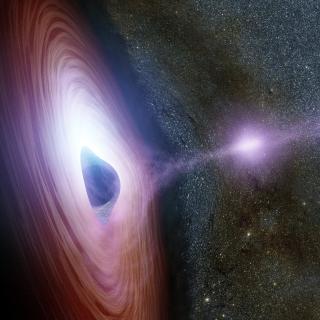Bibcode
Pittori, C.; Lucarelli, F.; Verrecchia, F.; Raiteri, C. M.; Villata, M.; Vittorini, V.; Tavani, M.; Puccetti, S.; Perri, M.; Donnarumma, I.; Vercellone, S.; Acosta-Pulido, J. A.; Bachev, R.; Benítez, E.; Borman, G. A.; Carnerero, M. I.; Carosati, D.; Chen, W. P.; Ehgamberdiev, Sh. A.; Goded, A.; Grishina, T. S.; Hiriart, D.; Hsiao, H. Y.; Jorstad, S. G.; Kimeridze, G. N.; Kopatskaya, E. N.; Kurtanidze, O. M.; Kurtanidze, S. O.; Larionov, V. M.; Larionova, L. V.; Marscher, A. P.; Mirzaqulov, D. O.; Morozova, D. A.; Nilsson, K.; Samal, M. R.; Sigua, L. A.; Spassov, B.; Strigachev, A.; Takalo, L. O.; Antonelli, L. A.; Bulgarelli, A.; Cattaneo, P.; Colafrancesco, S.; Giommi, P.; Longo, F.; Morselli, A.; Paoletti, F.
Referencia bibliográfica
The Astrophysical Journal, Volume 856, Issue 2, article id. 99, 9 pp. (2018).
Fecha de publicación:
4
2018
Revista
Número de citas
21
Número de citas referidas
20
Descripción
We report the AGILE detection and the results of the multifrequency
follow-up observations of a bright γ-ray flare of the blazar 3C
279 in 2015 June. We use AGILE and Fermi gamma-ray data, together with
Swift X-ray andoptical-ultraviolet data, and ground-based GASP-WEBT
optical observations, including polarization information, to study the
source variability and the overall spectral energy distribution during
the γ-ray flare. The γ-ray flaring data, compared with as
yet unpublished simultaneous optical data that will allow constraints on
the big blue bump disk luminosity, show very high Compton dominance
values of ∼100, with the ratio of γ-ray to optical emission
rising by a factor of three in a few hours. The multiwavelength behavior
of the source during the flare challenges one-zone leptonic theoretical
models. The new observations during the 2015 June flare are also
compared with already published data and nonsimultaneous historical 3C
279 archival data.
Proyectos relacionados

Variabilidad en Núcleos Activos de Galaxias: Estudios Multifrecuencia
Los núcleos activos de galaxias (AGN por sus siglas en inglés) se caracterizan por una potente emisión proveniente de una región muy compacta (sólo pocos pcs) en el centro de la galaxia. Los "blazars" son una categoría de AGNs, caracterizados por mostrar una alta luminosidad en un amplio rango de frecuencia, desde radio a altas energías (rayos X y
José Antonio
Acosta Pulido